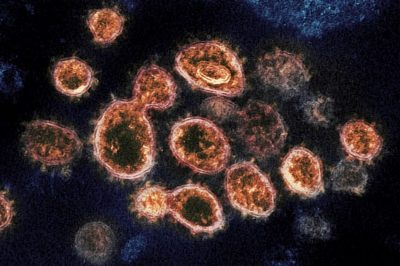Mental Health in Times of COVID-19
Share

Photo used for depiction. (Małgorzata / Pixabay)
In February 2020, as the outbreak of coronavirus was declared a pandemic, countries world over came to a halt. As the infection rates increased exponentially and the death toll continued to rise, governments urged their citizens to stay home to control the spread. Bustling cities transformed into ghost towns as people were forced to stay within their homes practising social and physical distancing. While this may help in reducing numbers and controlling the contagion, social distancing and isolation negatively impact the mental health of both people locked in and those working on front lines to save lives. And those already vulnerable are having a difficult time procuring medicines required for their mental health.
With 3,318,428 confirmed cases of COVID-19, including 234,250 deaths, a half third of the world’s population is currently under a massive lockdown. It separates loved ones from their families as travel restrictions have been put in place. While this has separated the elderly from their kids and grandkids, it has also forced women to stay back with abusive partners. Cases of domestic violence have increased since the lockdown globally, and in some countries by 49%. Before the lockdown, the victims would find solace in the outside world through counsellors, family and friends, but the current fight against the pandemic has left them with no regular help.
“Earlier, we used to get 900-1000 calls per day of domestic violence, eve-teasing, molestation and ever since the lockdown we get around 1000-1200 calls per day, mostly of domestic violence” reports India Today.
Mandatory work from home and online classes have majorly upset the routine of millions around the globe. Although people are finding new ways to stay connected, news and uncertainty regarding the situation and lack of outside contact have left people anxious and depressed. Constant news of the crisis and worries of dying family members has surged anxiety in young people. The situation is difficult to grapple with as adults, but even more so for children, as they find comfort in school and friends in times of need; with schools shut, children are having a difficult time coping with the situation.
For healthcare workers, things are not easy either at work or at home. From helplessly fighting to resuscitate their patients to wellness, to being ostracized by the community in fear of being infected, doctors and nurses are subjected to discrimination and harassment in India. There have been multiple reports of paranoid landlords evicting the doctors and police assaulting them while getting to work over the last month.
The paper The Psychological Impact of Quarantine and How to Reduce it published by Lancet studied mental health during the previous SARS epidemic; it highlights the stressors and a wide range of psychological conditions associated with quarantine. From post-traumatic stress symptoms to confusion, anger, depression, stress, insomnia and emotional exhaustion.
The publication also highlights the effects of stigmatization on healthcare workers. “Health-care workers also felt greater stigmatisation than the general public, exhibited more avoidance behaviours after quarantine, reported greater lost income and were consistently more affected psychologically: they reported substantially more anger, annoyance, fear, frustration, guilt, helplessness, isolation, loneliness, nervousness, sadness, worry, and were less happy,” read the paper.
According to this research paper, the psychological detriments and stressors are not limited to the period of quarantine but also post-quarantine. The stressors of post-quarantine include finances and stigma. It is clear from the research, fight against the COVID-19 will end one day but the detrimental impact the disease and the lockdown has on the mental health of millions around the world is long-lasting.
Enjoyed this article? Also, check out “Coronavirus and Other Deadly Outbreaks of the Past“.
Fact Analysis:
STSTW Media strives to deliver accurate information through careful research. However, things can go wrong. If you find the above article inaccurate or biased, please let us know at [email protected]













